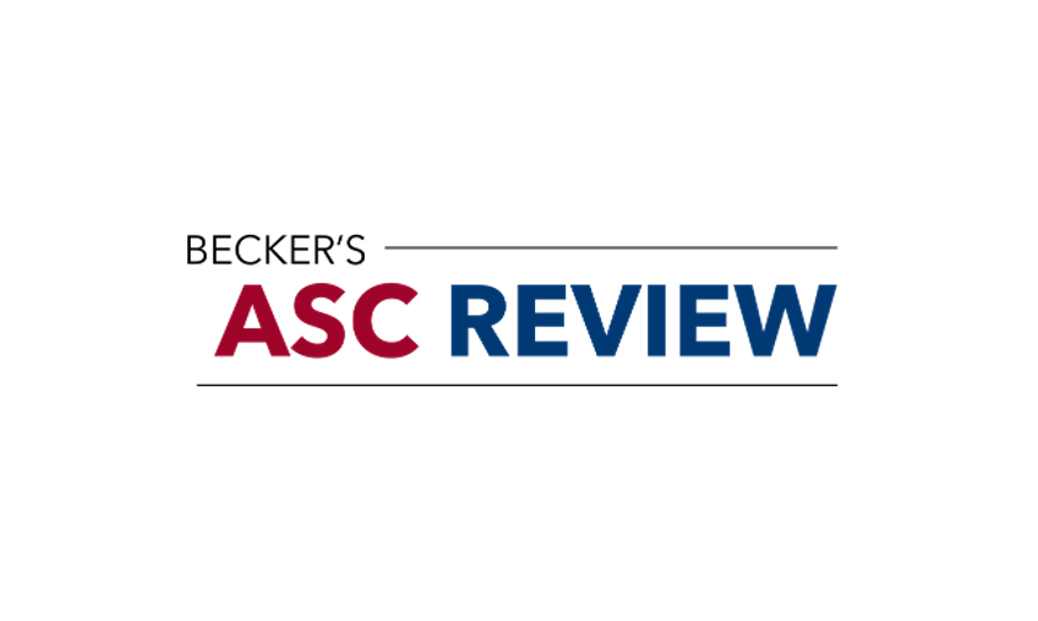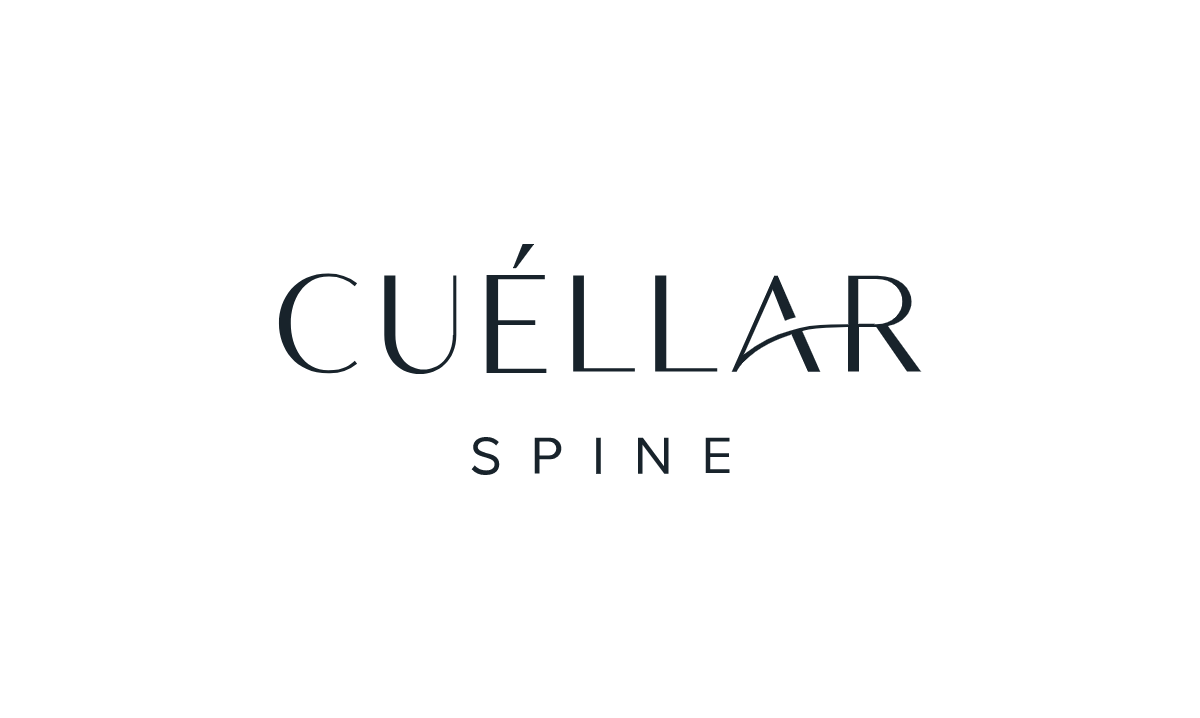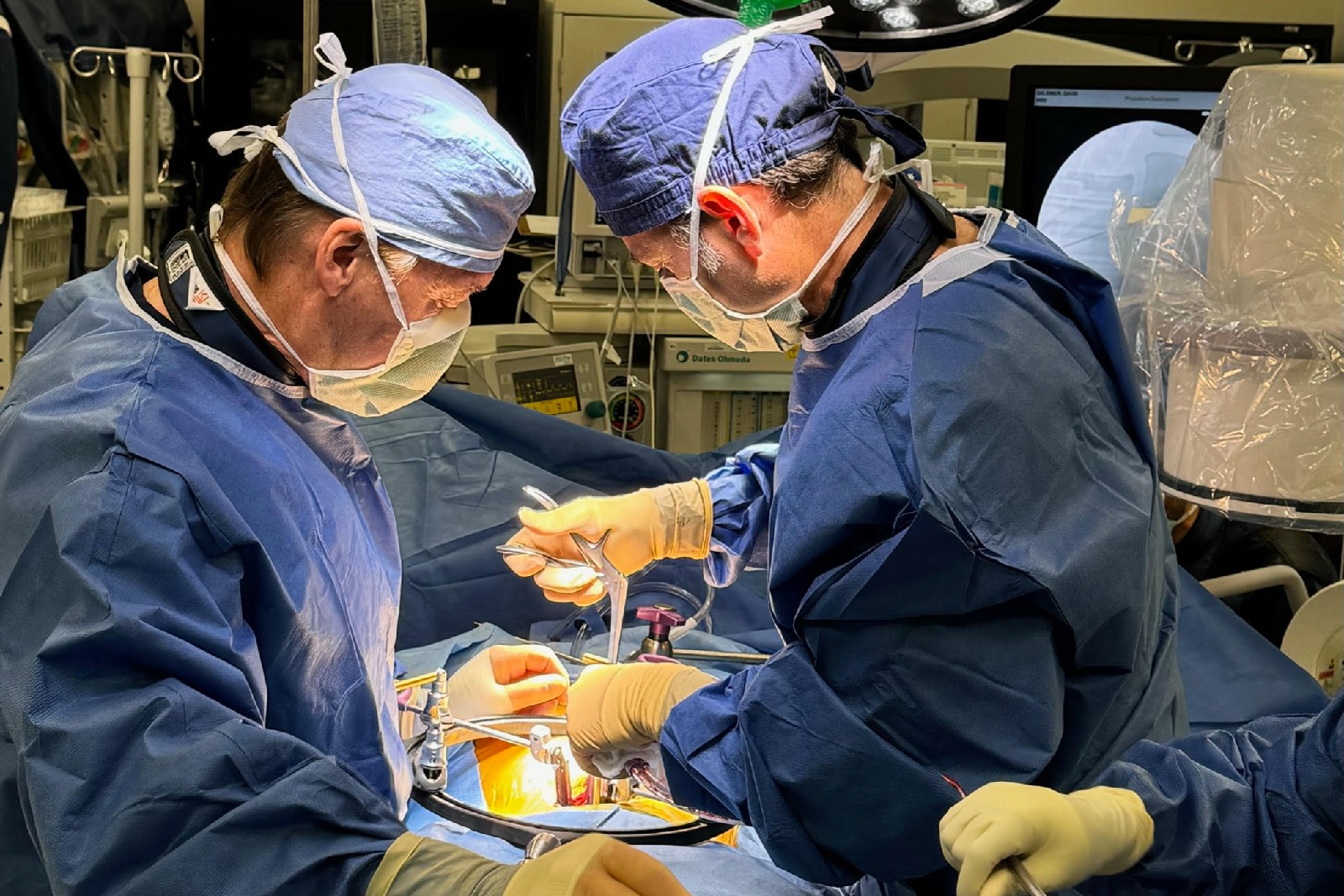Exploring the Success Rates and Benefits of Artificial Disc Replacement Surgery

An artificial disc replacement is a surgical procedure where a damaged or degenerated intervertebral disc in the spine is replaced with an artificial one. This procedure is also referred to as a “total disc replacement” (TDR) or a “total disc arthroplasty” (TDA). ADR can be performed in both the lumbar spine for low back pain and in the cervical spine for neck pain, arm pain or other symptoms arising from spinal cord compression.
An ADR surgical procedure can be a highly effective way to treat pain from a spinal condition and to improve a patient’s quality of life. An ADR may be a very effective route in finding a permanent solution to alleviate pain caused by degenerative disc disease or disc herniation.
In more recent years, ADR has been shown to outperform fusion in many large randomized controlled trials comparing the two. In fact, some of the benefits of an ADR surgery vs. a spinal fusion include: faster recovery time, reduced rates of dysphagia when performed in the neck (swallowing difficulty) and most importantly, the ability to maintain flexibility and movement in the natural spine may lead to lower repeat surgery at the original surgery level in addition to the adjacent segment.
There is hope for patients suffering from chronic back or neck pain that is not eased by conservative measures. Minimally invasive surgeries have become much more common in treating spinal conditions that are often caused by normal “wear and tear” of the spine. With these new technological advancements available to patients, there are safer, more reliable and readily available options available to provide lasting pain relief.
The Science Behind Artificial Disc Replacement
An artificial disc can be made up of surgical-grade plastic and/or metal, and it serves as a durable and viable option for replacing a “worn out” intervertebral disc. Artificial discs perform the same function as a normal vertebral disc and their material is stiff, inert and resistant to delamination (adhesive separation).
Anatomy of the Spine and Discs
The spine has 3 natural curves: the cervical (neck region), thoracic (mid-back) and lumbar (low-back). The spine is made up of:
- Vertebrae: 24 bones make up the spine
- Lamina: each vertebrae forms the back of the spinal canal
- Foramen: the small bony opening where nerves, on each side of the spinal cord, leave the spinal canal
- Transverse process: the “wing”-shaped bone on either side of the vertebrae
- Spinous process: the back part of each vertebrae (you can feel it through your skin)
- Discs: the spongy cushion that lies between each vertebrae
The intervertebral discs absorb shock and promote ease of movement between vertebral bodies. They also regulate the stability of the spine – in bending, extending and axial rotating.
Evolution of Disc Replacement Technology
Intervertebral disc replacement surgery first began in Europe in the 1990s, however, it has been performed by surgeons in the US since the early 2000s. European doctors began taking an interest in the procedure after complications arose from lumbar spinal fusion surgeries.
In 2004, the FDA approved the first artificial disc replacement (Charite disc) surgeries to treat chronic pain associated with degenerative disc disease, and in 2015 and 2021, the FDA approved devices (and replacement devices) for cervical disc replacements. The Charite implant had some problems and was taken off of the market, but was replaced by the ProDisc and then ActivL implants. Surgeons are now able to choose from devices of various sizes for the most effective long-term disc placements for patients – there are now several options for the cervical spine and 2 options for the lumbar spine. Dr. Cuéllar has experience using every single ADR implant currently approved in the US, but primarily uses the ProDisc in the lumbar spine. In the cervical spine, he uses the ProDisc, Prestige-LP and Simplify implants primarily.
According to ADR Spine and Front Range Spine and Neurosurgery, ADR technology continues to develop rapidly. For example, there is a device in clinical trials now, the “motus” that replaces a disc and a facet joint in the lumbar spine, correcting sagittal balance.
Meet Dr. Jason M. Cuéllar, Palm Beach County Spine Surgeon
Dr. Jason M. Cuéllar, M.D., is a fellowship-trained orthopaedic spine surgeon who specializes in treating spinal disorders, serving patients across South Florida. He is dedicated to compassionate service for his patients and provides both surgical and non-surgical treatments, including: artificial disc replacements, regenerative medicine, and injections of a novel biological therapy for osteoporosis. He is affiliated with Jupiter Medical Center, JFK North Hospital in West Palm Beach and Aventura Hospital in Miami. Dr. Cuéllar also performs surgery at Cedars-Sinai Medical Center in Los Angeles. Dr. Cuéllar received his Ph.D. at U.C. Davis, and attended Stanford University Medical School. He began studying and working in a pain research laboratory during his training and completed his post-doctoral research as a medical scholar’s research fellow.
During Dr. Cuéllar’s final year of training at Cedars-Sinai Medical Center, he trained with world experts in total disc replacement and motion preservation surgery, minimally-invasive decompression and fusion, scoliosis reconstruction and open spinal deformity surgery and spinal tumors. He has also been involved in basic and clinical scientific research investigation of the mechanisms of pain for patients with osteoarthritis and other musculoskeletal pathologies. Dr. Cuéllar has performed many successful spinal surgeries for patients over the years. He is a highly sought-after surgeon and considered to be one of the most highly specialized ADR surgeons in the nation. Furthermore, Dr. Cuéllar, was the first surgeon in the US to perform 3-level ADR using Prodisc© C Vivo. Dr. Cuéllar is a fellow of the American Academy of Orthopaedic Surgeons, a member of the North American Spine Society (NASS) and International Society for the Advancement of Spine Surgery (ISASS).
Why Dr. Cuéllar recommends artificial disc replacement or ADR
ADR has increasingly become a more popular option in treating pain caused by spinal conditions over the years. With daily advancements in technology for minimally invasive surgeries and the benefits of faster recovery times, decreased adjacent-level degeneration and the slowing of resultant arthritis in the spine, ADR has proven to be a more viable solution for patients than traditional spinal fusion surgery. ADR allows patients to maintain range of motion in their spines, restore their natural balance and preserve adjacent spinal levels.
Success Rates of Artificial Disc Replacement
ADR is known globally to be the least invasive spinal surgery and to have a 90-95% success rate. There have been many randomized controlled trials comparing fusion to disc replacement and all have shown ADR to be superior, particularly out past 5 years. Long-term (20+ years) data are now arising out of Europe and have supported long-term efficacy and safety for ADR.
Latest Research and Statistics
The latest statistics on ADR surgery show that patients have seen improvements in their chronic pain levels much sooner than patients undergoing a spinal fusion surgery, due to the recovery times associated with each procedure.
Unlike a spinal fusion, which involves the inserting of bone grafting material during the procedure, and thus yields as long as a 6-8 month recovery period, an ADR has a far reduced rehabilitation period and relatively quick recovery.
Statistics also show differences in patient success rates for the two procedures. The FDA rates ADR to have a more than 90% success rate, unlike spinal fusion surgery (which only has an approximate 70-90% success rate). Studies also suggest that for the lumbar spine, ADR has proven to be 90% successful. The FDA’s clinical trial data also showed that people who underwent disc replacement surgery had a success rate of over 87% compared with 81% of spinal fusion patients.
In addition. research suggests that ADR surgery has an approximate 70-year lifespan, due to the fact that most procedures do not require additional follow-up surgeries.
Do the success rates of ADR vary based on the type or brand of artificial disc used?
There are 4 types of artificial discs: composite, hydraulic, elastic and mechanical. While there is not yet evidence on which brands are more or less successful, some are more popular than others, depending on the patient’s need. Different types of discs accomplish different aims for patients:
- Composite: designed with flexible nucleus to reduce friction and wear and tear; allow for normal range of motion
- Elastic: fused to two titanium end plates with a core of rubber or silicone to allow for flexibility and compressibility
- Hydraulic: has a gel-like core that absorbs fluid and expands once implanted in order to maintain disc space height
- Mechanical: vary in design; some are made with an interposed spring design
What is the average success rate of Artificial Disc Replacement (ADR) surgery?
The FDA rates ADR to have a more than 90% success rate.
What contributes to the success rate of artificial disc replacement?
Selecting the right spinal surgeon is one of the most important decisions you will ever make – how you care for your spine will affect you for the rest of your life –with Dr. Jason M. Cuéllar, you can count on compassionate care and great results. In addition to selecting the right surgeon, ADR surgery yields the most optimal results for patients who are not excessively overweight or have significant facet joint disease.
Are there specific types of spine conditions where ADR has a higher success rate?
Patients who suffer from cervical degenerative disc disease or disc herniation causing radiating pain, numbness and/or tingling in the shoulders, arms or hands (radiculopathy) are likely to have a high success rate with ADR. In the low back, patients who experience low back pain with or without leg pain from a degenerative disc or disc herniation can be candidates for successful lumbar disc replacement surgery.
What factors can influence the success rate of ADR surgery for an individual patient?
Age in itself is not necessarily a factor when considering an ADR surgery – patients over 70 years old are still able to consider ADR as a viable option. Bone quality, arthritis and joint degeneration are important variables to consider when thinking about an ADR surgery. If you have osteoporosis you may not be able to undergo lumbar disc replacement or you may need to have treatment with bone hardening medications first. This is less of a problem in the cervical spine on average.
Is the success rate of ADR affected by the surgeon’s experience and skill?
Your surgeon’s skill level will determine the outcome of your procedure – Dr. Jason M. Cuéllar is a board-certified, award-winning orthopaedic spine surgeon. His patients boast a high rate of success with ADR surgery and he has been a well sought-after spine surgeon for many years. Dr. Cuéllar specializes in treating spinal disorders and his expertise and years of experience, are outshined only by his overwhelming sense of compassion. Many studies have shown that high-volume joint replacement surgeons and sites have better outcomes when performing joint replacement surgeries. This is no different for disc replacement of the spine – if the spine surgeon has not performed at least 50 artificial disc replacements and does not do this surgery at least several times a month, the outcome is less likely to be as good as a surgeon who has performed and continues to perform ADR on a regular basis.
Benefits of Artificial Disc Replacement
ADR surgery has many benefits – pain relief, speedy recovery, maintaining range of motion and improved mobility. One of Dr. Cuéllar’s main goals for his patients is also to preserve the spine’s natural movements and flexibility.
Pain Relief and Improved Mobility
Pain does not have to be a “normal” part of everyday life. An artificial disc replacement can restore function and stability to the spine, returning you to the quality of life you deserve. During an ADR surgery, a damaged disc is replaced with an artificial one so that your strength and ability to move naturally can return to that region of your back.
Preserving Natural Spine Function
When one area of the spine is damaged, weak, degenerated, deformed or diseased, the other vertebrae in the spine suffer as well, as pressure is put on them to compensate for the weak one. The health of our entire skeletal frame depends on the health of the spine. Preserving natural spine function is one of the most important things that one can accomplish by pursuing an ADR surgery.
Traditional spinal fusion is sometimes the only option available to a patient, but for most, an ADR offers the fastest recovery and the best option for restoring natural movement to the spine.
What is the long-term success rate of ADR in terms of pain relief and mobility improvement?
Longer term relief means less need for future surgery. ADR is known to provide long-term pain relief as it can last over 70 years according to some research studies.
Artificial disc replacement surgery may be considered minimally invasive, allows for rapid recovery and provides long-term pain relief. There has been a remarkable rate of success for ADR and technological advancements in the field continue to emerge every day. With so many benefits to patients for this minimally invasive, outpatient procedure – from restoring health, alignment and function to the spine, to a return to flexibility and movement in the body, to rapid recovery – Dr. Cuéllar encourages his patients to consider the long-term benefits of ADR as their chronic pain treatment solution.
Find out if ADR is the right solution for your spinal condition. Reach out to Dr. Jason M. Cuéllar today for a consultation and restore your spine and your quality of life.
More News & Insights from Cuéllar Spine
Exploring the Success Rates and Benefits of Laminectomy Without Fusion Surgery
Lumbar disc replacement surgery offers a promising alternative to traditional treatments for debilitating back pain and limited mobilit
The State of Outpatient Spine Surgery in 4 Studies
Outpatient spine surgery is growing, and its outlook suggests the trend will likely continue. Here are four studies illustrating the st
The Pros and Cons of Lumbar Disc Replacement (Also known as Total Disc Replacement (TDR), Total Disc Arthroplasty (TDA), or Artificial Disc Replacement (ADR))
Lumbar disc replacement surgery offers a promising alternative to traditional treatments for debilitating back pain and limited mobilit
10 Signs You May Need Revision Spine Surgery
Revision spine surgery, also known as secondary spine surgery, plays a crucial role in addressing persistent or recurrent spinal condit
Lumbar Total Disk Replacement Device Removals and Revisions Performed During a 20-Year Experience with 2141 Patients
This was a retrospective study with prospective patient contact attempted to collect current data.
36-Year-Old Male with History of Neck Pain
36-Year-Old Male with History of Neck Pain Radiating Into Both Shoulders, Numbness in Radial 3 Fingers of Both Hands
Problems with Artificial Disc Replacement
Artificial disc replacement (ADR), also known as total disc replacement (TDR), has emerged as a revolutionary approach in the field of
Top 5 Ways a Spinal Surgeon Can Help with Neck Pain
It is easy to take the movement in our necks for granted - and yet, when we are in pain, our neck flexibility can become extremely limi
ADR Spine Announces the Inclusion of Four Surgeons to Its National Top Doctors in Arthroplasty Program
ADR Spine Welcomes Elite Physicians to Top Doctors in Arthroplasty Program










